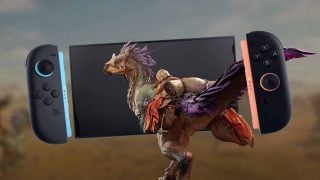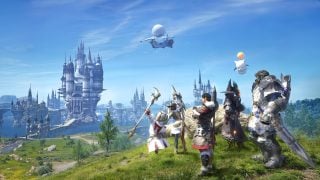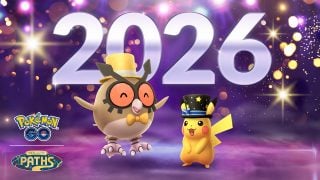With the recent release of Animal Crossing: Pocket Camp, Nintendo has now delivered all of its previously announced smartphone games. The shocking change in company policy that lead to the development of these titles was one of the final projects that Nintendo’s former president, Satoru Iwata, managed before his untimely passing.
These games have been a mixed bag of success for Nintendo, both in terms of quality and profits, and since all of the known games are now out in the wild, it’s a good time to check in and see where each Nintendo mobile game stands at the end of 2017.
My goal here is to examine what the games set out to achieve, how successful they were with those goals on launch, where they are today and where they can go from here.
Miitomo
Oh, Miitomo. Miitomo, Miitomo, Miitomo… Nintendo’s first foray into the world of phones wasn’t with Mario, Link or Soda Popinski — it was with Miis. Those lovable, customizable little things that just won’t ever go away. Miitomo launched on March 17, 2016 and got the world buzzing (Nintendo’s on the iPhone!!!). Loosely based on the insanely charming 3DS title Tomodachi Life, Miitomo ended up being 99% social media, 1% game. The app’s premise revolved around you and your friends answering questions, ranging from benign (what was the last thing you ate?) to weirdly personal (what are your fears?). Players could unlock new outfits and take wacky pictures with their Miis, arguably the app’s most entertaining feature.
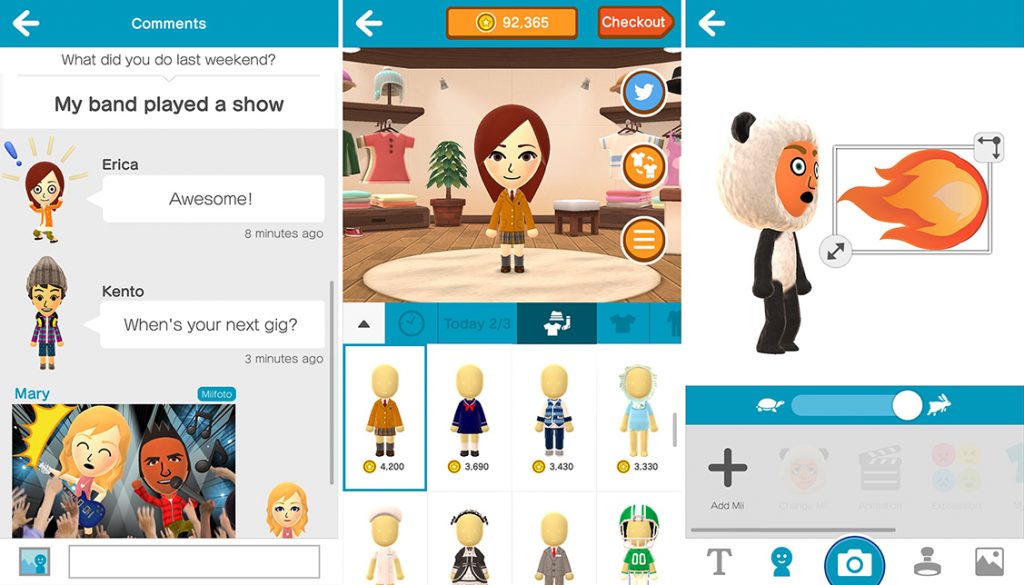
However, just as quickly as the world became fascinated with Miitomo, the game’s popularity died off not long after its launch. There were many complaints in regards to the app’s slow pace and long loads, the wonky UI, and the realization that answering personality quizzes without any other meat gets old quick.
For this article, I booted up Miitomo for the first time in probably more than a year. I knew Nintendo had been regularly updating the app, but I didn’t realize how many new features have been added. Players can now create and share “Sidekick Miis” in a global, searchable list, so if you want Sans from Undertale or Joe Biden hanging out with your Mii on your phone, go nuts. There are also new global outfit, answer, and photo sections. One of the app’s biggest complaints at launch — the lack of a direct messaging system — has been addressed.
So, what we have in December 2017 is what Miitomo should have been initially. The ability to share outfits and Miis globally and to send private messages to friends is something that might have held the populace’s interest at least a little longer, as those features give the app more of a social media feel, rather than serve as a minor distraction. But “too little, too late” doesn’t even touch Miitomo. I’d love to see user numbers for the app. When I logged on today, the global questions have answers from lots of people still regularly logging in, but no one on my friends list has played since early 2016, and I don’t blame them.
Score:
Launch: C- | Fun and wacky, but gets old quickly
Currently: C+ | This is what the game should have launched as, but it’s just too late
Future prospects: Unless Nintendo updated the game to be a free copy of Tomodachi Life, it might be time to let ol’ Miitomo ride off into the sunset.
Pokémon GO
Now, this game isn’t technically a Nintendo title, as The Pokémon Company is a separate entity, but any list about Nintendo mobile games is incomplete without mentioning Pokémon GO. The game caused a mass craze, the likes of which I have never seen before. People in my own hometown were packing our downtown streets and parks daily, all crowding around whatever neat Pokémon appeared on the map. Stores and restaurants either embraced the game and offered discounts if you caught something there, or discouraged people from taking up space just to catch a virtual Beedrill and leave. The game was an unprecedented success. In fact, the Guinness Book of World Records bestowed the game with several awards, including most downloads and highest gross for a mobile game during its launch month.
![]()
The social impact of Pokémon GO was extremely apparent, but it was also obvious that the app launched with a cavalcade of problems. The servers were not able to handle the hundreds of millions of players, leading to login issues, long loads, wonky GPS services, disappearing Pokémon and much more. On top of that, the game itself has been criticized for being a barebones approximation of the Pokémon experience. Gym Battles are nonsensical tapfests, and trading and the ability to battle friends are still MIA.
In late 2017, the frothing public attention for Pokémon GO has died down greatly, but the game is still going strong. Niantic has been adding new Pokémon from later generations, usually tied in with holidays or events, which has given many players reason to log back on every now and then. The app is much less prone to crashing and bugging out, and there are new features that have improved the experience, such as changes to the gym battling systems. Most excitingly, Niantic finally added the long-promised raids and legendary Pokémon.
If you didn’t like Pokémon GO a year ago, you still won’t like it now. It’s still mainly about collecting and usually ignoring the Gym Battles, but the new Pokémon and the raid system give the game a fresh energy. Niantic needs to constantly add newer generations, and I wouldn’t mind seeing some sort of total overhaul of the game’s battling and evolution system. Despite the maintenance that needs to be applied to GO, I’m still surprised by how many people still loyally play the game. Last week, I drove past a relatively unpopular park and saw a group of about 20 people standing around one tree, looking at their phones. I had a gut feeling and checked Pokémon GO — they were all battling Ho-Oh.
Score:
Launch: B | The game was a buggy mess, but the social impact and sense of shared interest with complete strangers was magical. The technical issues keep the score from being higher.
Currently: B+ | Less popular, but better game. Raids give longtime players good motivation to get out to landmarks and play the game again.
Future prospects: The game needs some sort of gameplay overhaul to keep it fresh. Rethink battles and evolution and add in trading. Keep adding newer Pokémon and the game might have a long life, but Niantic will have to give the public reason to come back.
Super Mario Run
Nintendo shocked the world when Mario creator Shigeru Miyamoto walked out onto the stage at Apple’s annual iPhone event in September of 2016. It was there that he announced that Super Mario Run would be coming to smartphones. Business analysts and industry forecasters went into a frenzy, predicting huge successes and/or losses with Nintendo putting its flagship series onto a non-Nintendo device. The game, which plays as a simplified platformer with touch controls, was released as a free-to-download title that required a $9.99 purchase to unlock all levels and features. The game became Google’s most downloaded game of 2017, but Nintendo’s president Tatsumi Kimishima stated in an interview that the game “did not meet [their] expectations” in order to garner profit. The free-to-play, more traditional structure of Fire Emblem Heroes ended up being more financially successful, despite the lesser-known IP.

But what about the game itself? Super Mario Run, in my opinion, is one of the best examples of taking an existing video game series and modifying it in a sensical way to mobile devices. It still has all of the trappings of a mainline Mario game — jumping, wall-jumping, triple jumping, jump jumping — but in an easily digestible format that’s playable with one hand. The increasingly difficult coin challenges give good motivation to replay levels, and the different characters have a surprising amount of variety that changes the game. The game launched with plenty of flaws though. The $9.99 price point, while cheap compared to normal Nintendo products, is a steep wall to climb for the mobile market. Most phone users are used to paying nothing, or at most one or two dollars. Even after shelling out the one-time payment, there are still weird remnants in the game that make it seem like it was planned to be free-to-play. Mario Run always has to be connected to wi-fi, which is relatively pointless for this title, and the ticket system for the Toad Rally mode feels even more trite. The game hands out tickets like candy, and you’ll almost always have 99 of them. The kingdom customization is another weird addition, as you can earn coins and unlock new buildings and items to put in your kingdom to… just look at.
The real issue with the game has been the lack of content. Whereas all of Nintendo’s free-to-play games have been regularly updating with content, including Miitomo, Super Mario Run has had one major update — which added the very fun Remix x10 mode — and that’s about it. The game will get some new useless items to put in your uninteresting kingdom; but for $9.99, the game should have been adding new levels every few weeks. That’s what I thought would happen when I dropped a Hamilton on the game. Nintendo said that it will be moving away from the one-time payment model that Super Mario Run employs, but I have to wonder if the game would have made more money if the company had done its part and made the purchase a long-term investment.
Score:
Launch: A- | I was addicted to the game, and while I did burn through the levels pretty quickly, it had enough replayability for a few weeks and months.
Currently: B | The game launched almost exactly a year ago, and we still have the same set of levels from launch, albeit with some new bells and whistles. $9.99 should have paid for a steady stream of new worlds.
Future prospects: Eh, I think ol’ Ninty is done with this one. Mario will show up again on smartphones, I’m sure, but I doubt Super Mario Run will get the new content I crave.
Fire Emblem Heroes
This is Nintendo’s most successful in-house mobile game yet (in terms of profits) and, in my opinion, game design. Fire Emblem Heroes takes the deep strategy elements of the mainline series and boils it down to a chibi-styled snack. Players “summon” hundreds of characters from a whole range of Fire Emblem games, level them up, equip them with skills, and put them on teams of four for challenge story missions, arena fights and more. Nintendo made a great decision and got a slew of Japanese artists to draw the various characters, which has made me interested in many characters I’ve never even heard of previous to the game’s release. The gameplay retains the weapon triangle from previous games, simplifying the magic and weapon weaknesses to “red beats green beats blue.” The maps are smaller. The battles remove crits and the ability to miss. Levels can be beaten in minutes. FE Heroes doesn’t replace the core Fire Emblem experience, but it does perfectly simplify it for a short bus ride.
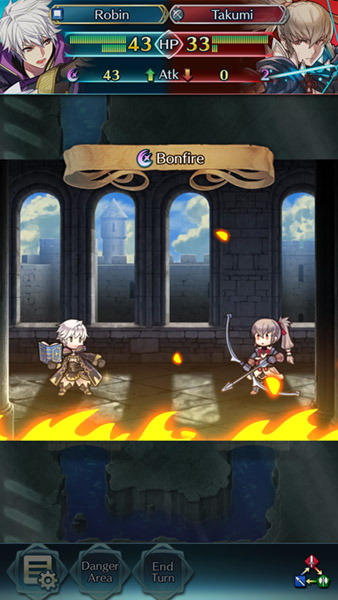
The game has a similar progression system to other free-to-play mobile games, with a “gacha” style character draw, much like the gachapon capsule machines, where you put in a quarter, turn the knob and get some random prize. Players spend orbs that can be earned or, of course, bought, to unlock random characters. Sometimes you get a five-star Azura. Usually, you get a three-star Barst. The game used to be stingier in handing out orbs, resulting in little motivation to login every day for the casual player, but now it’s common to get one or two orbs every day, meaning many more new character pulls are possible without spending money. I also appreciate that, unlike some mobile character collection games (I’m looking at you, Marvel Puzzle Quest), you don’t have to draw multiple of the same character just to level them up. Once you have that five-star Cherche, just level her up and you’re good to go. This is all from the perspective of a casual Fire Emblem Heroes player, but I find the game balances the difficulty and leveling system well for a free-to-play gacha game. Fire Emblem Heroes, despite having ten times fewer downloads than Super Mario Run in April 2017, still makes more money than Nintendo’s mustachioed mascot on the mobile market. Expect all future Nintendo mobile games to be free-to-play.
Today, the game has a huge cast of characters, with new ones getting added regularly. There are also frequent holiday events, Voting Gauntlets and story chapters added constantly… The list goes on and on. The game is receiving amazing post-launch support from the developers. There was a period when, after the free daily orbs to celebrate the launch were stopped, orbs were rare to acquire — but Nintendo seems to have taken the complaints into consideration and now the company hands them out left and right. Again, for the hardcore players that just want a five-star Ike with better stats, they might drop wads of cash on the game and come away disappointed, which is a legitimate complaint; but for a mobile Fire Emblem experience I haven’t had to spend a penny on, I’m very happy. If Nintendo keeps adding characters, story chapters and events, I think the game can have a long life.
Score:
Launch: A | It took a while for Nintendo to figure out the proper balance to give away orbs, but the game was a ton of fun even when it first launched.
Currently: A+ | While hardcore players might have complaints about progression, I find the game is perfect for a few minutes of gameplay every day. It’s the only mobile game I make sure to log into daily.
Future prospects: Just keep adding characters and content. Maybe think ahead for how you can make getting specific characters easier, but I think the game’s on a good track.
Animal Crossing Pocket Camp
We finally arrive at the newest, and perhaps most anticipated of the known Nintendo mobile games: Animal Crossing. What felt like a natural candidate for the casual-friendly mobile market, Pocket Camp was finally launched after numerous delays. The game keeps the series’ art style and the ability to walk around, place furniture and talk to animal neighbors — but in a different light. Instead of managing a city as a mayor (like in New Leaf), you’re in charge of a campground that you can decorate however you want, and invite different animals to hang out there. You can craft furniture with materials gained from giving the animals things like bugs, fish and fruit, making this the weirdest economic system on the planet.
The game retains much of the characters’ charms (Goldie is still my favorite), but there’s definitely a sense of skeeze underneath the surface. The game can feel completely random with its distribution of materials, sometimes needing huge amounts of steel or something to craft a small item like a lamp. Combine that with crafting times that jump from minutes to hours very quickly, and you get the image of Nintendo gently elbowing you and gesturing towards a pile of Leaf Tickets you could buy… you know, if you just really want that sofa right this very minute. This is just the nature of mobile games today: drip-feeds of fun that only turn up the dosage when you turn up the dosh.
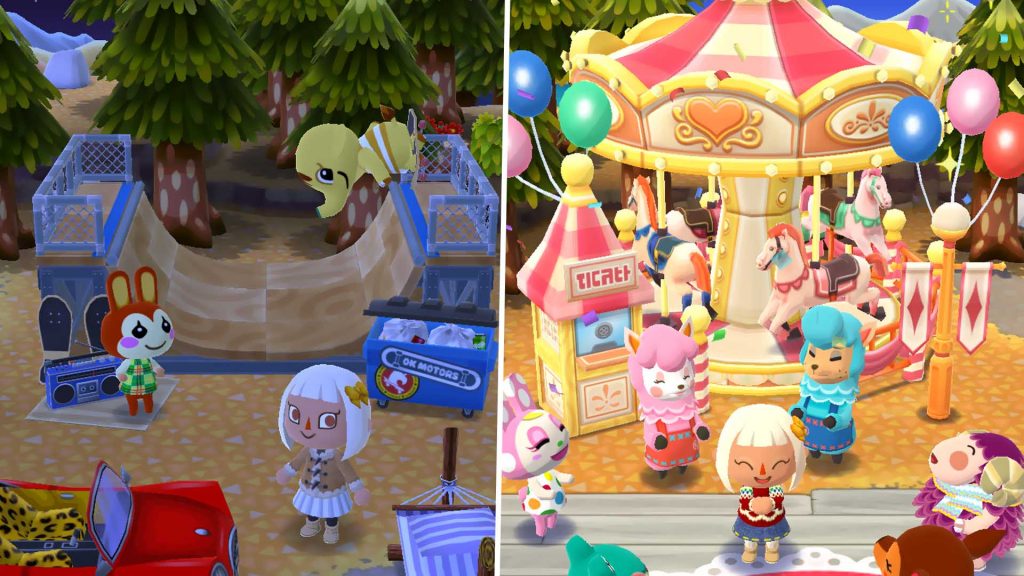
It’s also disappointing that every player unlocks mostly the same furniture at the same levels, and that the current pool of animals stands only at 44. A lot of the fun of older games, especially New Leaf on the 3DS, was exploring other peoples’ towns, meeting their neighbors and then sometimes having them move to your town. Every town I go to in Pocket Camp has Goldie, Apollo, Cherry and Beau, and they all have the same hammock, grills and tables. Nintendo has already added four new characters since launch, but New Leaf had a whopping 333 villagers. Why take the time to customize your camp if it’s really not going to be all that unique? Alternatively, I wouldn’t mind having the animals come and go as they please. It was always sad in New Leaf to have a favorite neighbor move away, but it’s exciting to get a new one and see who moves in.
The game is still new, and I still really enjoy playing it with my wife and friends, but it has a lot of room to improve. I want to see Nintendo give a far greater variety of animals to join your camp. Nintendo should lower the crafting requirements and shorten the timers. A lot of the problems come down to numbers that could easily be tweaked, but the game could also use just a touch more charm. There need to be more things to do other than the request > craft > invite to camp > repeat gameplay flow. Give us a museum to donate to. Give us minigames that are just for fun. Give us more ways to interact with the animals. There needs to be more randomness. I want to log on and sometimes find Redd in my camp, or find Gulliver on the beach sometimes. The unexpected surprises when starting up New Leaf every day aren’t in Pocket Camp, and that’s what the game is sorely missing. The game is so very young, and I’m hopeful that it will head in a good direction, but right now it’s a fun distraction that doesn’t feel like it has a ton of depth.
Score:
Launch: B | I enjoy having Animal Crossing on my phone, and it has some unique ideas, but the gameplay is thin.
Future prospects: More, more, more. Nintendo needs to add to what is already there, and come up with new places to go, things to do, and ways to interact within this world.
Conclusion
Other than a few less significant Pokémon titles, these are all of the major Nintendo mobile titles that are released and officially announced. Overall, I am happy with the company’s effort. The games all have amazing production value, especially in comparison to other games on the smartphone market, and each has its own, unique method of concentrating its gameplay in a way that makes sense for phones. However, the very nature of the mobile market has caused some pains for Nintendo, be it the inability to turn a profit off of one-time-payment games, or the difficulty of balancing free-to-play games. You can see the lessons Nintendo has or hasn’t been learning from title to title, which is fascinating.
It’ll be interesting to see what batch of mobile games the Big N announces next. Rumor has it, a Zelda game will come out, and I’m still banking on some kind of “build your own Inkopolis” Splatoon game. Whatever the company plans to make, I can only hope it listens more to the game designers and less to the investors and executives who only want to make money.
I’d prefer not to have to wait five hours or pay $0.99 for the boss key to unlock the door to King Dodongo in Goron Mountain.
Leave a Comment